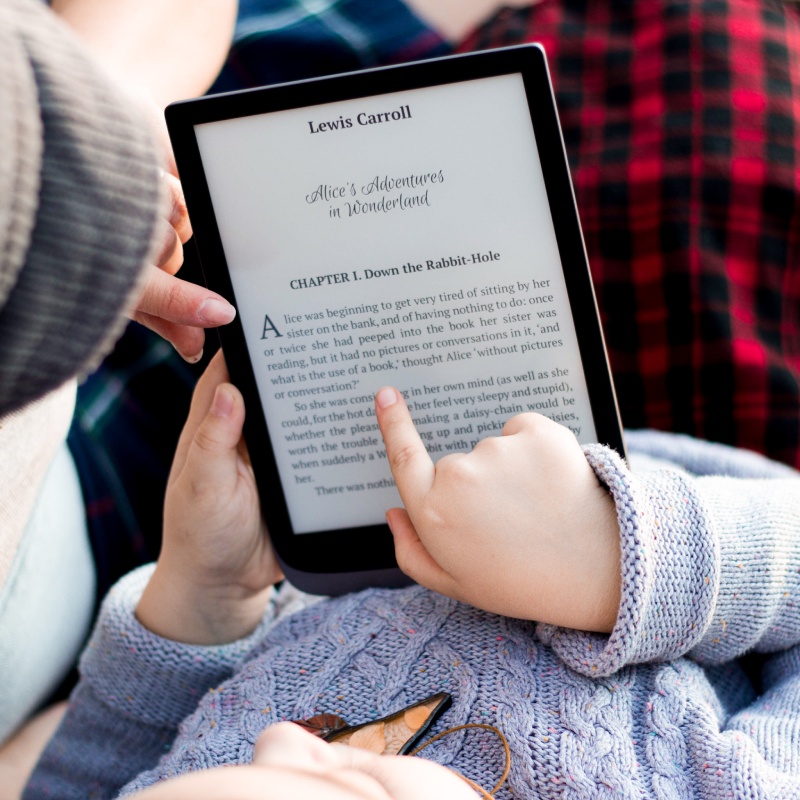A group of scientists from Harvard and other leading scientific institutions presented a study demonstrating how E Ink screen is safer for the eyes than traditional LCD displays of tablets or smartphones.
The key findings of the study in three sentences:
- E-readers with an E Ink screen and adaptive frontlight (warm/cool tone) are 2-3 times safer for the eyes compared to gadgets with an LCD screen and backlight;
- Blue light exposure can increase levels of reactive oxidative species (ROS) in the human body;
- Choosing a warm tone for the screen frontlight can reduce the level of blue light emitted by the gadget, but the capabilities of the LCD screen are much less effective.
And now, let's look at the scientific article to ensure that e-readers with an E Ink screen are the most eye-friendly gadgets in the world!
A few words about E Ink
If you own an e-reader or have heard about such a device, you probably know its main advantage over smartphones, tablets, and other gadgets. Yes, we are talking about a unique E Ink screen, which is much closer in its optical characteristics to ordinary paper than traditional LCD screens. But what is the main difference?
Reflection is better than emission
As the authors of the article note, in reflective E Ink devices, you can see the information on the screen because it reflects light, just like regular paper. E Ink technology uses white and black or colored pigments to show information. "Unless the frontlight is turned on, the eye never receives more light than present in the ambient environment." In other words, a PocketBook with a frontlight turned off is no more harmful to the eyes than a regular paper page.
However, emissive LCD displays of smartphones and tablets use LED sources to backlight the screen. They work by shining light through various layers, including liquid crystals, color filters, and touch panels. The light used in LCDs typically comes from white LEDs with a blue diode at their core. The blue light emitted by these LEDs is intense and can be problematic.
Blue light and its harmful effects on our body
As we mentioned, E Ink screens don't emit their own light. Instead, they rely on the ambient light around us. Of course, this applies to reading in good light with the frontlight turned off.
Traditional LCD screens emit their own light, known as backlighting. This light can be quite harsh and includes a lot of blue light. The blue light isn't all bad, but prolonged exposure to it, especially before bedtime, can wreak havoc on our sleep patterns and eye health.
Doesn't sound too scary? Well, there are additional reasons to treat blue light with caution.
In the research, scientists study how blue light exposure reduces cell viability and increases levels of reactive oxidative species (ROS) in the human body. Elevated ROS, in turn, can cause health problems, so this potential danger should not be ignored.

E-reader or tablet - which emits less blue light?
A group of scientists compared devices with the frontlight on. Why? Because e-readers with an E Ink screen rely on ambient lighting for visibility, just like traditional printed books. So, they do not emit blue light until the screen frontlight is turned on. But in the case of poor lighting, the e-reader, like an ordinary book, needs the help of lighting devices or frontlight.
To understand which type of screen emits less blue light and is, therefore, safer for the eyes, scientists studied four devices:
- Tablet with LCD screen and warm/cool backlight;
- E-reader with black and white E Ink screen and warm/cool frontlight;
- E-reader with color E Ink screen and warm/cool frontlight;
- E-reader with a color E Ink screen and a cool frontlight.
After extensive testing, described in detail here, scientists were able to formulate several important conclusions:
- Cells accumulated ROS two to three times as fast when exposed to a backlight LCD screen compared to a frontlight E Ink screen, each operated in the same light mode (day or night);
- Devices that cause ROS accumulation at a lower rate (i.e., E Ink screen with frontlight) can be used for longer times before the same levels of ROS are reached.
What does this study mean for PocketBook owners?
Research from a reputable scientific team confirms that E Ink e-readers are the most eye-friendly device. It is also worth emphasising the importance of SMARTlight technology, which depends on the comfort of your reading with frontlight.
Read safely with PocketBook!